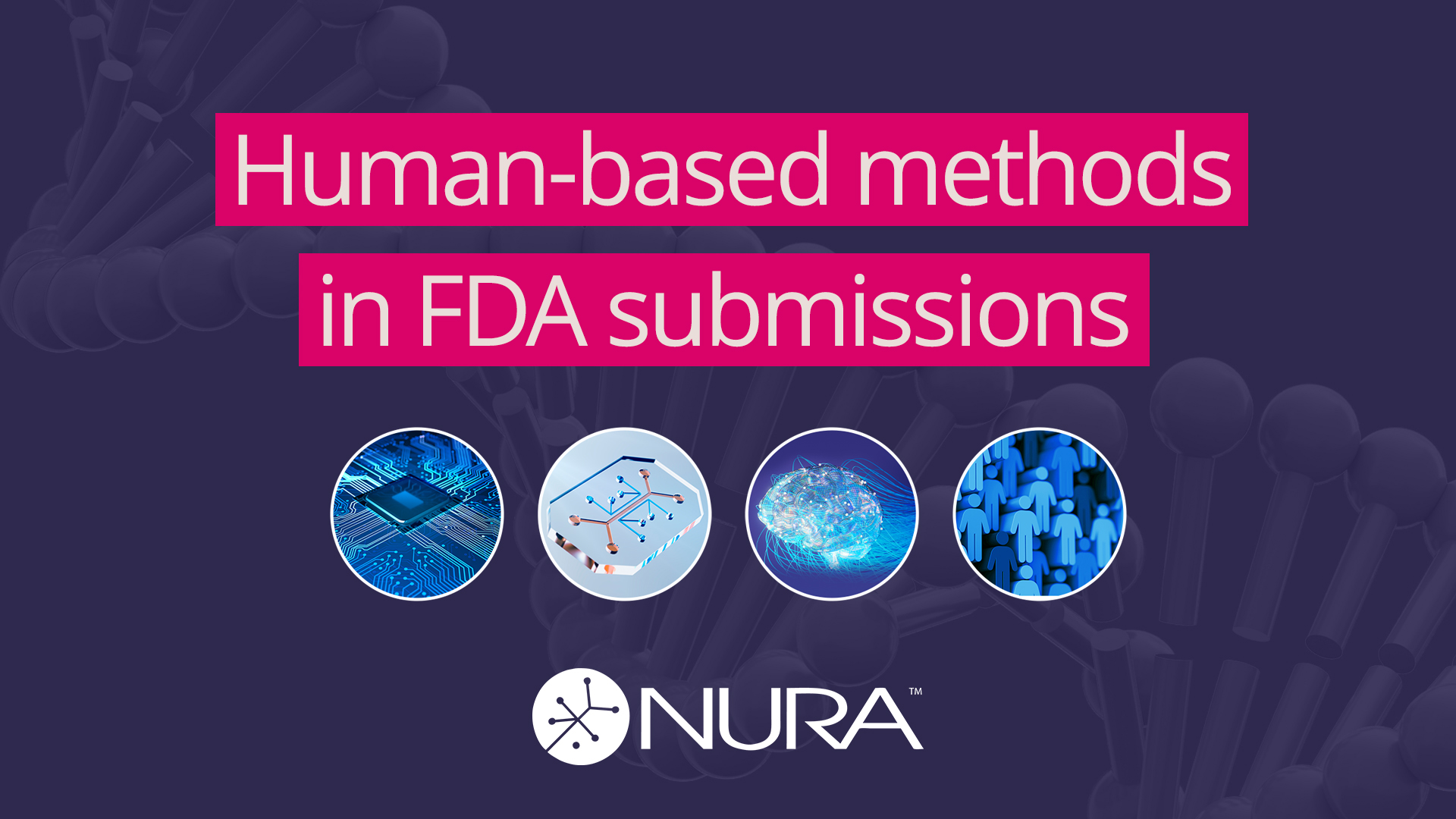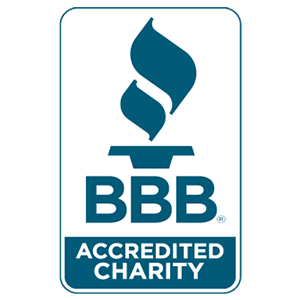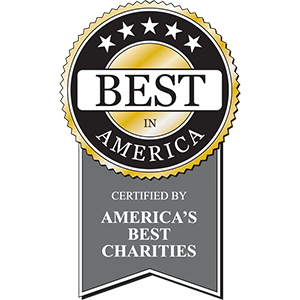NAM Use for Regulatory Application
Select a Section
Human-based methods in FDA submissions
The US Food and Drug Administration (FDA) regulates medical products, including investigational drugs, biologics, and devices. To progress into clinical trials with human patients, safety and efficacy information must be submitted by industry and approved by the agency.
Traditionally, these submissions have included data from animal studies but the use of nonanimal methods (NAMs) in FDA submissions is expected to grow. Many toxicologists seek to use human-based approaches and both the FDA and industry have made commitments to reduce animal use. In fact, the FDA recently published a Roadmap to Reducing Animal Testing in Preclinical Safety Studies along with a plan to phase out animal testing requirements.
In this series, NURA features leaders in human-relevant, nonanimal methods to demonstrate medical product safety and efficacy. This series offers an opportunity for the scientific community to learn from each other and inspire researchers and developers to use and submit more NAMs to the FDA and other regulatory agencies.
Upcoming Webinars
The FDA ISTAND Program: A Guide to Replacing Animal Experiments with Your Method
Wednesday, January 28, 2026
1-2pm ET / 18:00-19:00 UTC
From organoids to artificial intelligence, New Approach Methodologies (NAMs) promise to reinvent the way we study drugs. NAMs generate human-relevant data, reduce the reliance on animal models, and are built from the ground up to provide quantitative and actionable results in drug development. One of the major hurdles remaining in the adoption of NAMs is how these data are integrated and interpreted in regulatory submissions. From the US “Roadmap to Reducing Animal Testing in Preclinical Safety Studies” to the UK “Replacing Animals in Science” strategy, 2025 has seen a flurry of activity from regulators to define precisely how NAMs data can be accepted. At the forefront of the drive to reduce animal studies is the FDA ISTAND Program (Innovative Science and Technology Approaches for New Drugs) to qualify NAMs for regulatory use.
In this webinar, Dr. Michael Phelan, founder of InnovApproach Consulting, will describe his experiences as the lead of the first ever submission accepted into the ISTAND program. He will provide a step-by-step guide to preparing for and completing each phase of the ISTAND program. Attendees will learn how to best position their own technologies for ISTAND submission and what the impacts of qualification might be.
Key Learning Objectives
- Understand the purpose, advantages, and process of the FDA ISTAND Program
- Learn how to structure ISTAND submissions for success
- Identify key pitfalls and challenges that could threaten your ISTAND submission
- Discuss other pathways to NAMs acceptance
- Explore how NAM qualification programs will accelerate ethical innovation and translational relevance of preclinical research
About the Speaker
Michael Phelan, PhD is the founder of InnovApproach Consulting, a firm dedicated to guiding NAMs developers through validation and qualification programs. Dr. Phelan previously served as the Associate Director of Quality and Manufacturing at Integral Molecular where he led the first technology accepted into the FDA ISTAND program. In that capacity, he personally contributed to materials now used across all ISTAND applications and gained key insights into the program’s design and evolution. Dr. Phelan holds a PhD in bioengineering, completed as a fellow at the NIH, with a focus on retinal organoids and other iPSC-based approaches to model human biology.
Previous Webinars
NURA x Emulate
Regulatory Green Light: Using Organ-on-a-Chip Technology to Meet Evolving FDA Expectations
Wednesday, September 10, 2025
11am-12pm ET / 15:00-16:00 UTC
Animal models have served as the default standard in preclinical research for decades, but their limited predictive value for human outcomes continues to slow drug development and contribute to high attrition rates. Recent regulatory milestones—including the FDA’s roadmap to reduce animal use, the NIH’s prioritization of human-relevant models, and Emulate’s own Liver-Chip S1 acceptance into the FDA ISTAND program—signal a decisive shift toward New Approach Methodologies (NAMs).
In this webinar, Emulate’s Dr. Daniel Levner, Chief Technology Officer, will share how the FDA’s ISTAND qualification of the Liver-Chip S1 represents a pivotal step for regulatory recognition and broader adoption of Organ-on-a-Chip technology. Attendees will gain insight into how this breakthrough aligns with global initiatives to reduce animal testing, the scientific validation underpinning the platform, and practical strategies for integrating Liver-Chip data into regulatory submissions.
Key learning objectives
- Understand what FDA ISTAND acceptance means for the regulatory qualification of Organ-on-a-Chip technology and its impact on drug development.
- Learn how Emulate’s Liver-Chip S1 is poised to meet FDA expectations for context of use, building on strong scientific evidence and cross-industry collaboration.
- Explore the FDA’s roadmap to reduce animal usage and how Organ-on-a-Chip technology can future-proof your pipeline against evolving regulatory standards.
- Identify strategies for incorporating Liver-Chip data into IND submissions to increase confidence, improve predictability, and accelerate decision-making.
About the Speaker
Daniel Levner, PhD, is the Chief Technology Officer at Emulate. A serial deep-tech entrepreneur, Levner co-founded Emulate and brings to it extensive experience in biological and engineering technology development and commercialization. Levner joined the Emulate founding team during his role as a Senior Staff Scientist with the Wyss Institute for Biologically Inspired Engineering at Harvard University. There, he led the advanced engineering team responsible for developing the Emulate Organ-Chip platform and played a key leadership role formulating innovative approaches for bridging biologists, engineers and business stakeholders.
Prior to directing the Organ-Chip program, Levner worked with world-renowned Harvard geneticist Prof. George M. Church in programs related to medical diagnostics, DNA/RNA sequencing, and multiplexed biological sample analysis techniques. Levner co-founded a medical diagnostics startup company, and earlier in his career, an optical telecommunications startup company.
Levner received his PhD in electrical engineering from Stanford University as well as an MS in aeronautics and astronautics, also from Stanford. He has authored numerous publications and has more than 70 issued and pending US patents.
Access the slide deck, Q&A report, and a list of additional resources.
Case Study: The Utilization of human-on-a-chip systems for regulatory submissions for neurological conditions
Tuesday, September 10, 2024, at 1pm ET
About the Speaker
Dr. James “J” Hickman is a founder and chief scientist at Hesperos, Inc., and the founding director of the NanoScience Technology Center, and a professor of nanoscience technology and electrical engineering at the University of Central Florida. Dr. Hickman has a doctorate from Massachusetts Institute of Technology in chemistry. For the past 30 years, he has been studying the interaction of biological species with modified surfaces.
Hesperos, Inc. is a biotechnology contract research organization leveraging its patented human-on-a-chip multiorgan platform to accelerate drug discovery by providing safety and efficacy testing for novel therapeutics. Hesperos has been constructing multiorgan human-on-a-chip or body-on-a-chip systems for toxicology and efficacy with up to six organs and has demonstrated long-term (more than 28 days) evaluation of drugs and compounds, which have shown similar response to results seen from clinical data or reports in the literature. Application of these systems are being used for amyotrophic lateral sclerosis; Alzheimer’s disease; rare diseases; diabetes; and cardiac, immune, and skeletal muscle mechanistic toxicity.
Presentation Abstract
Preclinical models for Neurodegenerative diseases such as Amyotrophic Lateral Sclerosis (ALS), Chronic Inflammatory Demyelinating Polyneurophathy (CIDP), Myasthenia Gravis (MG), Charcot-Marie-Tooth Disease and Alzheimer’s Disease (AD) has historically relied on animal models. Our research focus is on the establishment of functional in vitro systems to create organs and subsystems to model motor control, muscle function, myelination and cognitive function, as well as cardiac and liver subsystems. The idea is to integrate microsystems fabrication technology and surface modifications with protein and cellular components, for initiating and maintaining self-assembly and growth into biologically, mechanically and electronically interactive functional systems. Specific embodiments of this technology are the creation of a functional human NMJ system to understand ALS. MG, CMT and a long-term potentiation (LTP) for AD utilizing clinically relevant functional readouts. We have investigated four mutations found in ALS patients; SOD1, FUS, TDP43 and C9ORF72. The models have demonstrated variations of the disease phenotype compared to WT for NMJ stability and functional dynamics and data from this system has been utilized for INDs. We have also demonstrated the LTP model can reproduce Aβ pathology and tauopathy in human cortical neurons and demonstrated how AD therapeutics can recover these effects Examples will be given of some of the other human-on-a-chip systems being developed for CNS and PNS disease applications as well as the results Sanofi has used as efficacy data from one of our models to file the first IND only from MPS data that has enabled a clinical trial CIDP (#NCT04658472) that has now proceeded to a Phase III trial.
Learning Objectives:
- How multiple organ mimics can be assembled into one platform with a recirculating serum free medium.
- Clinically relevant functional readouts for electrical, mechanical, and barriers can be utilized in these systems.
- How disease relevant models can be developed from these systems and be utilized for regulatory submission.
Call for presenters on Human-based methods in FDA Submissions
NURA would like to feature your human-based nonanimal approach in a webinar. We are looking for examples of NAMs that have been submitted in FDA applications. Present your NAM to a diverse regulatory audience of hundreds of professionals from industry, government, and NGOs, followed by an audience-led Q&A session.
Please submit your presentation title and abstract or speaker suggestion to nura [at] pcrm.org.









